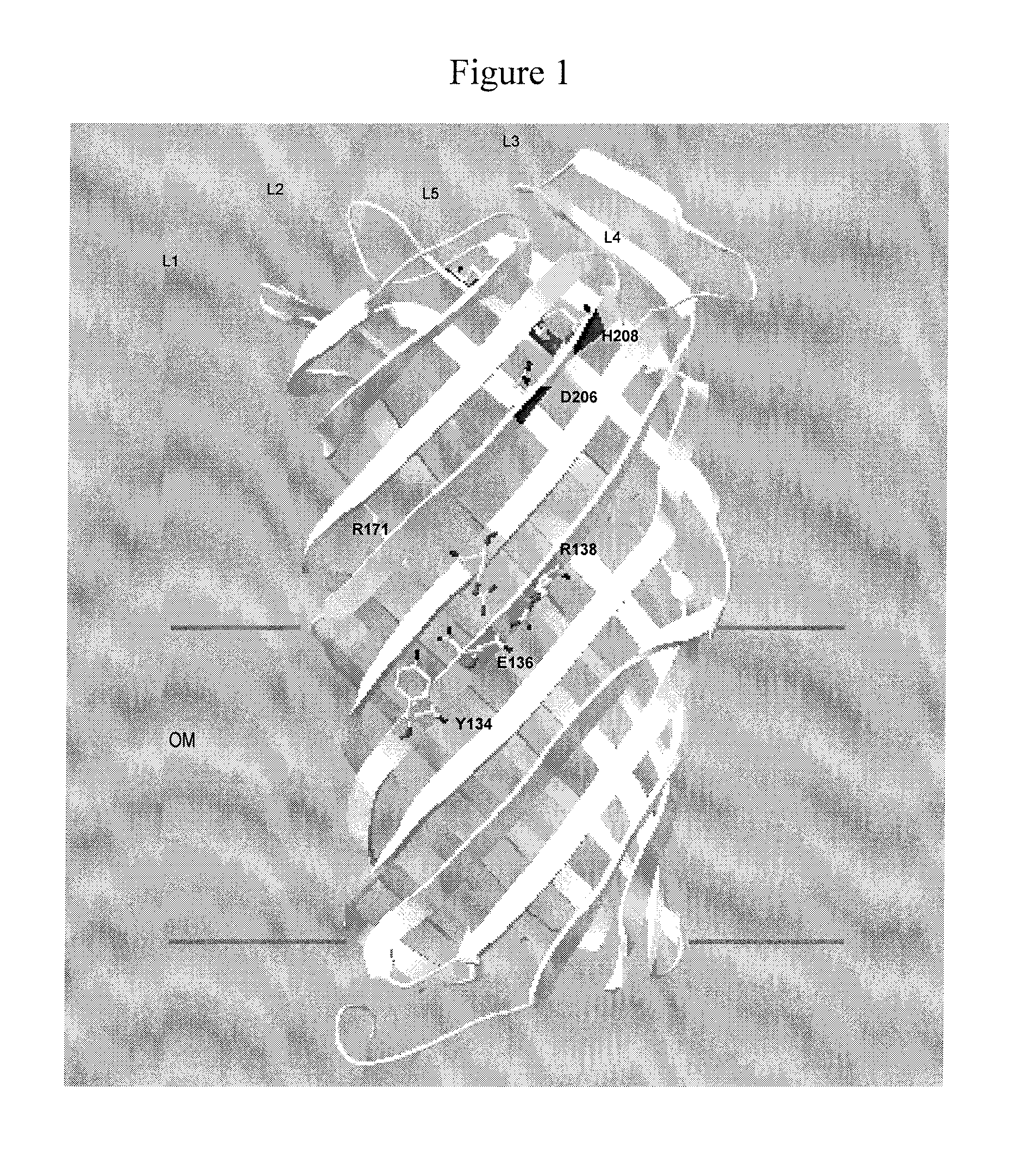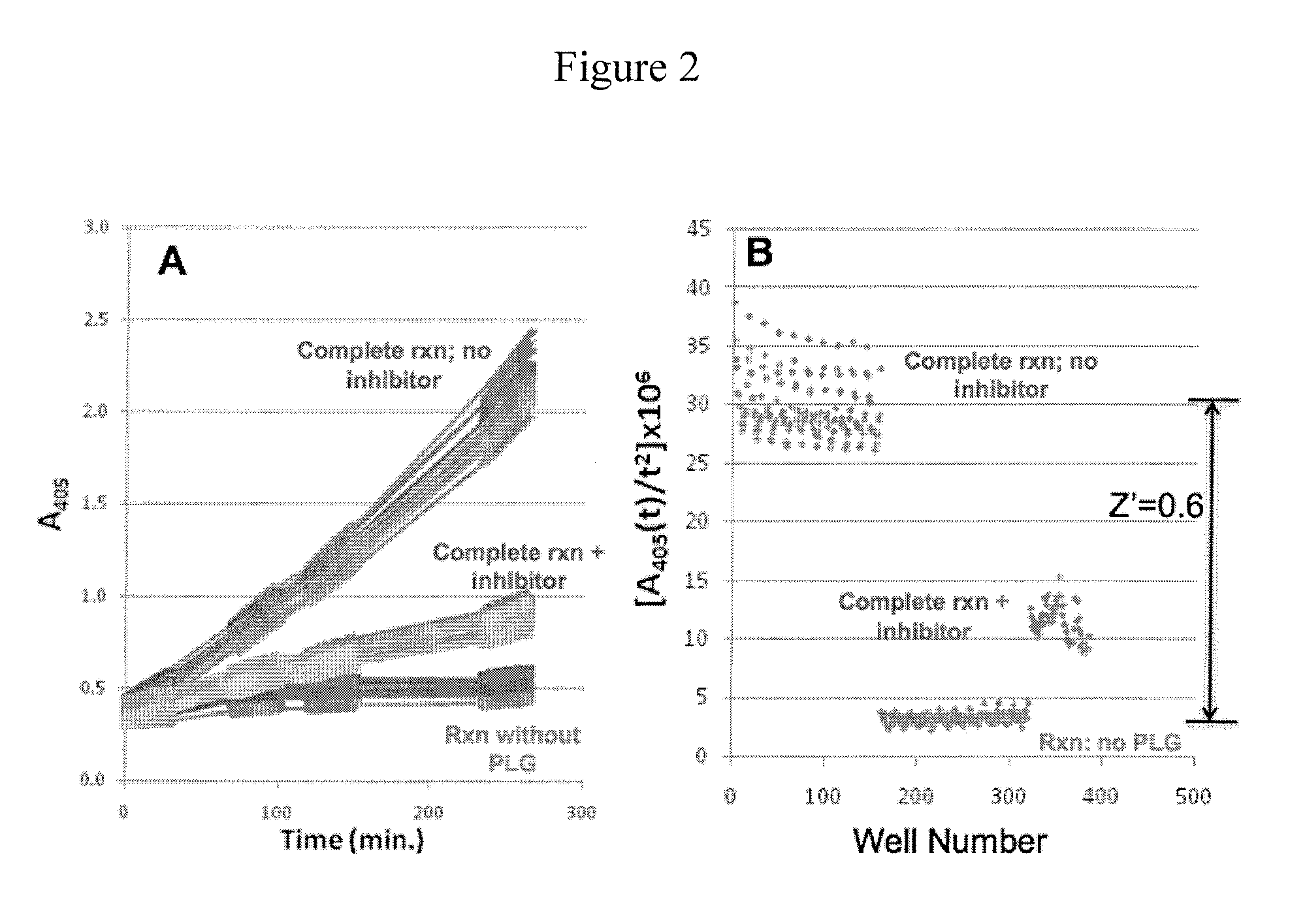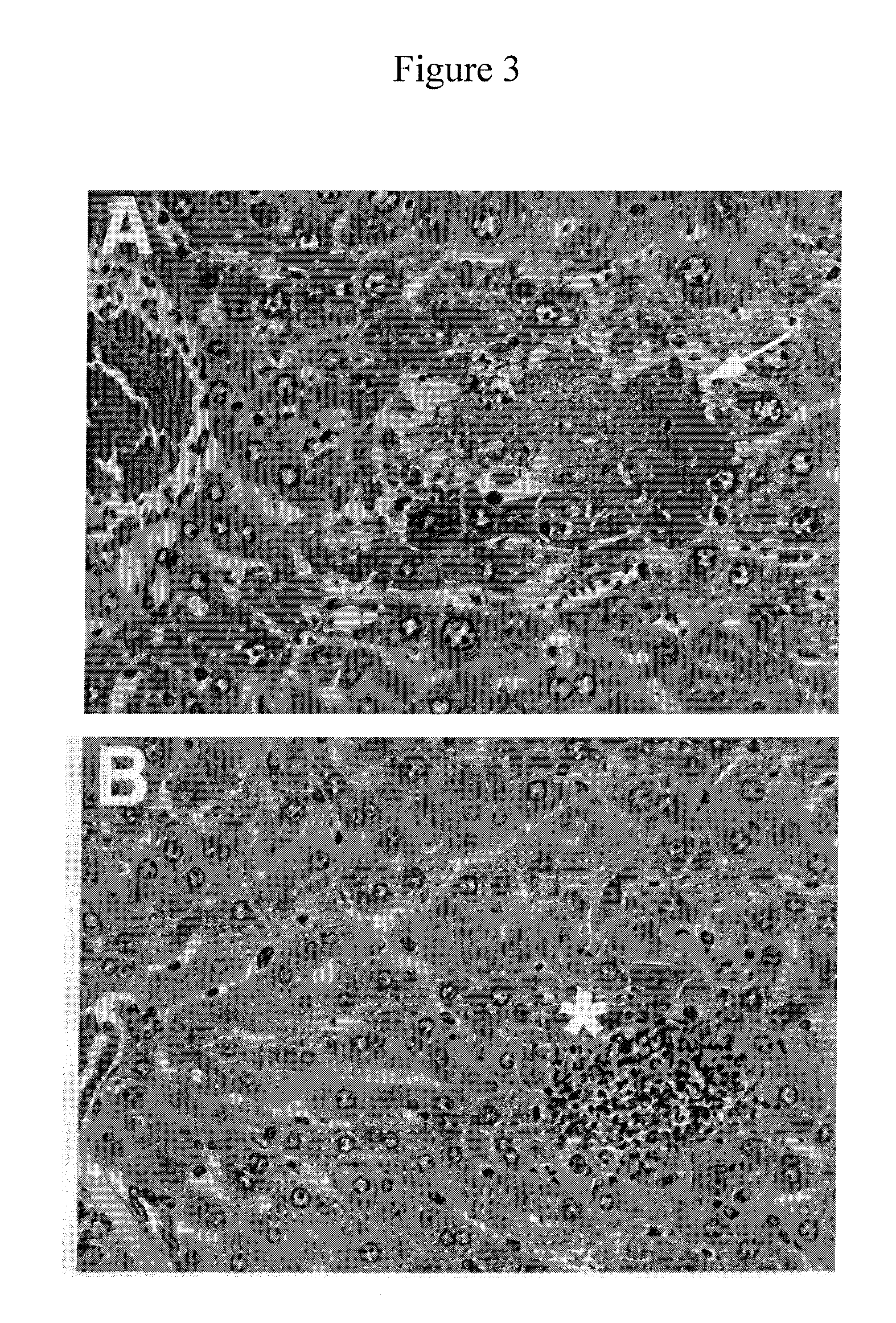Inhibitors of bacterial plasminogen activators
- Summary
- Abstract
- Description
- Claims
- Application Information
AI Technical Summary
Benefits of technology
Problems solved by technology
Method used
Image
Examples
example 1
Confirmation of Link between Pla and Virulence
[0133]In subcutaneous infection of mice, Pla plays a key role in virulence (Sodeinde, O. A., et al., (1992) op. cit.): Pla-deficient mutants are reduced in virulence by a factor of a million. This loss of virulence is accompanied by inability to prevent the rapid accumulation of inflammatory cells, particularly neutrophils, at foci of infection. For preliminary efficacy testing of Pla inhibitors in vivo, mice are infected intravenously with 1,000 Y. pestis, and at two days post-infection are sacrificed and their livers examined histologically. At the time of infection, some bacteria are deposited in the liver and the extent of inflammatory cell infiltration at the sites of colonization is readily seen in hematoxylin-eosin (H+E) stained sections (see, FIGS. 3A & 3B). When wild-type bacteria are used, masses of bacteria are seen packed in liver sinusoids (see, FIG. 3A, arrow) but virtually no inflammatory cells are present, a remarkable de...
example 2
Broad Distribution of Pla Activity Among Enterobacteriaceae
[0134]We have examined octylglucoside extracts of 735 bacterial clinical isolates representing 41 species for plasminogen activating activity. The results (see, FIG. 4) reveal that while none produces as much activity as Y. pestis on a per cell basis, many strains and species do produce significant Pla-like activity. Most are known to carry omptin family members, but our findings suggest that the family is larger than previously known and includes Enterobacter and Klebsiella. In fact, we cloned and sequenced the omptin produced by the E. cloacae strain with the highest level of activity, and found it more closely related to Y. pestis Pla than any other omptin described to date. Of course, the majority of the 735 strains did not produce significant Pla-like activity, indicating that this activity is not due to non-specific proteases.
example 3
Preparation of Recombinant Pla Produced in E. coli
[0135]Although it is possible to purify the enzyme safely from attenuated Y. pestis strains, we have done the bulk of our work with Pla isolated from an E. coli strain engineered to express the enzyme at very high levels. In this strain, BL21(pBSpla), the pla gene (Genbank Accession number AAA27667) is driven by its native promoter but contained in a high copy number plasmid (pBlueScript, Agilent Technologies, Wilmington, Del.). Pla comprises about 40% of total outer membrane protein in this strain. Remarkably, this high level of expression has minimal effects on growth, and the plasmid is easily maintained via ampicillin selection. This level of expression is about 10-fold higher than that observed in Y. pestis. BL21(pBSp / a) also lacks OmpT, the E. coli Pla homolog.
PUM
| Property | Measurement | Unit |
|---|---|---|
| Molar density | aaaaa | aaaaa |
| Molar density | aaaaa | aaaaa |
| Fraction | aaaaa | aaaaa |
Abstract
Description
Claims
Application Information
 Login to View More
Login to View More - R&D
- Intellectual Property
- Life Sciences
- Materials
- Tech Scout
- Unparalleled Data Quality
- Higher Quality Content
- 60% Fewer Hallucinations
Browse by: Latest US Patents, China's latest patents, Technical Efficacy Thesaurus, Application Domain, Technology Topic, Popular Technical Reports.
© 2025 PatSnap. All rights reserved.Legal|Privacy policy|Modern Slavery Act Transparency Statement|Sitemap|About US| Contact US: help@patsnap.com



